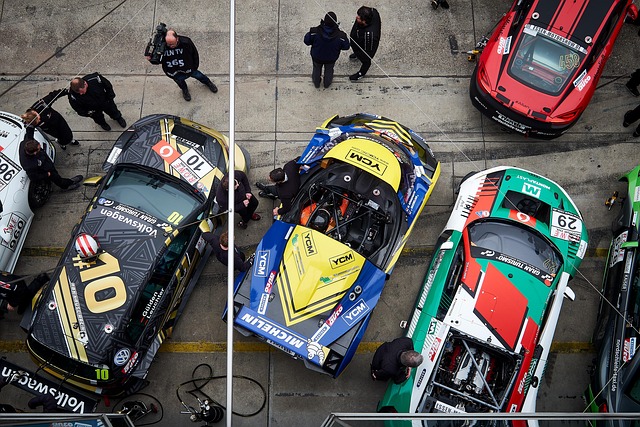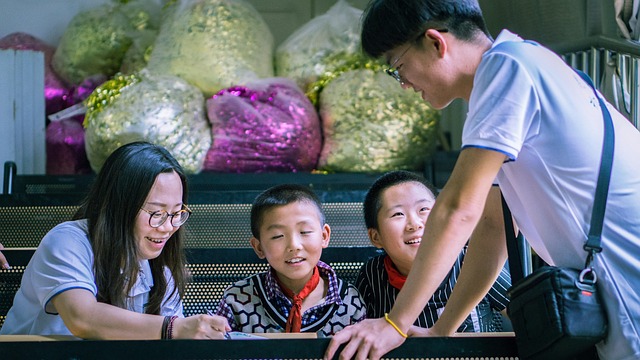
Team Capabilities Build Innovation and Culture in Tech Workplaces
In today’s fast‑moving technology sector, the phrase “team capabilities” has evolved from a buzzword to a critical determinant of organizational success. Companies that cultivate robust team capabilities often see sharper product roadmaps, higher employee engagement, and a culture that embraces continuous learning. This article explores how teams can develop the skills, mindset, and collaborative habits that drive both innovation and a resilient workplace culture.
The Foundations of Team Capabilities
Team capabilities are not simply the sum of individual talents; they represent the emergent properties that arise when people work together effectively. Four foundational pillars underpin this concept:
- Skill Diversity: A blend of technical expertise, creative thinking, and domain knowledge.
- Process Discipline: Agile frameworks, clear ownership, and transparent metrics.
- Emotional Intelligence: Empathy, conflict resolution, and psychological safety.
- Leadership Alignment: Shared vision, open communication, and adaptive governance.
When teams master these pillars, they create a self‑reinforcing loop: diverse skills feed innovative solutions, disciplined processes keep projects on track, emotional intelligence fosters trust, and aligned leadership ensures that every effort serves a common purpose.
Skill Diversity: The Engine of Innovation
High‑performing tech teams thrive on diversity—not just in backgrounds, but in thinking styles. An engineer who excels at low‑level optimization, a product manager who understands user journeys, and a data scientist who can translate numbers into stories form a powerful triad. When such individuals collaborate, they uncover blind spots and generate ideas that would not emerge in homogenous groups.
Companies can nurture skill diversity by:
- Recruiting from a wide talent pool, including interdisciplinary candidates.
- Encouraging cross‑functional rotations that expose team members to new domains.
- Providing continuous learning opportunities, such as workshops on emerging technologies and soft‑skill development.
Over time, the team’s collective expertise expands, enabling them to tackle complex problems with confidence.
Case Study: A Cross‑Disciplinary Hackathon
At a leading fintech firm, a three‑day hackathon assembled data scientists, UI designers, and cybersecurity specialists to build a prototype for real‑time fraud detection. By blending statistical modeling with intuitive user interfaces and secure architecture, the team delivered a solution that reduced false positives by 30%. The event highlighted how skill diversity fuels rapid prototyping and breakthrough results.
Process Discipline: Turning Vision into Deliverable Outcomes
Even the most creative teams can falter without structured processes. Agile methodologies, such as Scrum or Kanban, provide a framework that balances flexibility with accountability. Core practices include sprint planning, daily stand‑ups, retrospectives, and Definition of Done (DoD) criteria. By adhering to these rituals, teams reduce ambiguity and accelerate delivery.
Process discipline also supports team capabilities by:
- Establishing clear ownership of tasks, which reduces hand‑off friction.
- Tracking progress through visible metrics, enabling data‑driven decisions.
- Facilitating rapid feedback loops that shorten iteration cycles.
When teams embrace disciplined processes, they create an environment where innovation can flourish without being derailed by confusion or scope creep.
Implementing a Kanban System
One technology startup transitioned from a waterfall model to Kanban. By visualizing work on a board with columns for “Ready,” “In Progress,” “Review,” and “Done,” the team could spot bottlenecks in real time. The result was a 25% improvement in feature release velocity, coupled with higher team morale because each member could see how their contributions moved the project forward.
Emotional Intelligence: The Glue That Holds Teams Together
Technical prowess and process rigor are essential, but without emotional intelligence (EI), teams can quickly become dysfunctional. EI encompasses self‑awareness, self‑regulation, motivation, empathy, and social skills. High EI teams navigate conflicts constructively, maintain psychological safety, and adapt to change with resilience.
Organizations can cultivate EI by:
- Offering coaching programs that focus on communication and conflict resolution.
- Integrating EI assessments into performance reviews to identify growth areas.
- Encouraging a culture of open feedback where dissenting voices are heard and respected.
When team members feel safe to express ideas and admit mistakes, the probability of innovative breakthroughs rises dramatically.
Psychological Safety in Action
During a high‑stakes product launch, a senior engineer noticed that a junior developer was hesitant to voice concerns about a new API integration. By fostering psychological safety, the senior engineer invited the junior developer to discuss the issue openly in a stand‑up meeting. The conversation revealed a subtle flaw that could have caused a critical outage. The early detection saved the company millions in potential downtime and reinforced the team’s trust in each other’s expertise.
Leadership Alignment: Ensuring Shared Purpose and Vision
Even the most capable teams can diverge without a clear alignment of goals. Leadership must articulate a compelling vision, translate it into measurable objectives, and model the behaviors that support the culture. This alignment trickles down through cascading OKRs (Objectives and Key Results) and reinforced through regular communication.
Key leadership practices include:
- Setting transparent expectations for outcomes and processes.
- Providing timely recognition that ties performance to the broader mission.
- Facilitating cross‑team collaboration to prevent silos and encourage knowledge sharing.
When leadership and teams are aligned, the organization moves as a single unit, making it easier to pivot, iterate, and innovate on the fly.
Quarterly Culture Check‑Ins
In a multinational cloud services company, leadership introduced quarterly culture check‑ins. Each department presented data on engagement, diversity, and innovation metrics. The insights were shared company‑wide, and action plans were created collaboratively. This practice not only maintained alignment but also surfaced systemic issues before they escalated.
Measuring Team Capabilities
Quantifying team capabilities is challenging because many factors are qualitative. Nonetheless, a balanced scorecard approach can help organizations track progress:
- Skill Depth: Average years of experience per role, number of certifications, cross‑training hours.
- Process Efficiency: Cycle time, lead time, defect density.
- Emotional Climate: Employee Net Promoter Score (eNPS), psychological safety survey results.
- Leadership Effectiveness: Alignment of OKRs, frequency of feedback cycles, leadership accessibility score.
Regular data collection coupled with qualitative insights from retrospectives provides a comprehensive view of how well teams are evolving.
Practical Steps to Elevate Team Capabilities
- Start with a Diagnostic: Use surveys, skill matrices, and process audits to identify gaps.
- Design Targeted Interventions: Offer mentorship, upskilling, process redesign, or EI workshops based on diagnostic findings.
- Embed Learning into the Workflow: Adopt knowledge sharing rituals like “Tech Talks” or “Lunch & Learn” sessions.
- Iterate and Iterate Again: Treat capability building as a continuous improvement loop—measure, learn, adjust.
- Celebrate Milestones: Publicly recognize teams that hit innovation or culture benchmarks to reinforce desired behaviors.
Conclusion: Team Capabilities as the Cornerstone of Modern Tech Workplaces
In an era where technological change accelerates at an unprecedented pace, the ability of a team to innovate and adapt is more valuable than ever. Team capabilities encapsulate the blend of diverse skills, disciplined processes, emotional intelligence, and aligned leadership that together create a resilient and high‑performing workforce. Organizations that invest in developing these capabilities not only produce superior products but also nurture a culture that attracts, retains, and grows top talent.
Ultimately, building team capabilities is an ongoing journey. It requires commitment from every level of the organization, from hiring managers to chief technologists. By systematically fostering these capabilities, tech workplaces can achieve sustained innovation, elevated employee satisfaction, and a competitive edge that lasts well into the future.


